The birth of the Soviet missile defense system. Osokin vs. Kilby, Who Really Invented the Microcircuit
The first patent (1949) belonged to Werner Jacobi, a German engineer from Siemens AG, he proposed using microcircuits for, again, hearing aids, but no one was interested in his idea. Then there was the famous speech of Dammer in May 1952 (his numerous attempts to push funding for the improvement of his prototypes from the British government continued until 1956 and ended in nothing). In October of the same year, prominent inventor Bernard More Oliver filed a patent for a method for making a composite transistor on a common semiconductor chip, and a year later Harwick Johnson, after discussing this with John Torkel Wallmark, patented the idea of an integrated circuit ...
All these works, however, remained purely theoretical, because three technological barriers arose on the way to a monolithic scheme.
Bo Lojek (Bo Lojek. History of Semiconductor Engineering, 2007) described them as: integration (there is no technological way to form electronic components in a monolithic semiconductor crystal), isolation (there is no effective way to electrically isolate IC components), connection (there is no easy way to connect IC components on the crystal). Only knowledge of the secrets of integration, isolation and connection of components using photolithography made it possible to create a full-fledged prototype of a semiconductor IC.
USA
As a result, it turned out that in the United States, each of the three solutions had its own author, and the patents for them ended up in the hands of three corporations.
Kurt Lehovec of the Sprague Electric Company attended a seminar in Princeton in the winter of 1958, where Walmark presented his vision of the fundamental problems of microelectronics. On his way home to Massachusetts, Lehovets came up with an elegant solution to the isolation problem - using the pn junction itself! The management of Sprague, busy with corporate wars, was not interested in the invention of Legovets (yes, once again we note that stupid leaders are the scourge of all countries, not only in the USSR, however, in the USA, due to the much greater flexibility of society, this did not come close to such problems, at least a particular firm suffered, and not the entire direction of science and technology, as we do), and he limited himself to a patent application at his own expense.
Earlier, in September 1958, the already mentioned Jack Kilby from Texas Instruments presented the first prototype of the IC - a single-transistor oscillator, completely repeating the circuit and idea of Johnson's patent, and a little later - a two-transistor trigger.
Kilby's patents did not address the issue of isolation and bonding. The insulator was an air gap - a cut to the entire depth of the crystal, and for connection he used a hinged mounting (!) With gold wire (the famous "hair" technology, and yes, it was actually used in the first ICs from TI, which made them monstrously low-tech), in fact, Kilby's schemes were hybrid rather than monolithic.
But he completely solved the problem of integration and proved that all the necessary components can be grown in a crystal array. At Texas Instruments, everything was fine with the leaders, they immediately realized what kind of treasure fell into their hands, so immediately, without even waiting for the correction of children's ailments, in the same 1958 they began to promote the crude technology to the military (at the same time being imposed on all conceivable patents). As we remember, the military at this time was carried away by something completely different - micromodules: both the army and the navy rejected the proposal.
However, the Air Force suddenly became interested in the topic, it was too late to retreat, it was necessary to somehow establish production using the incredibly poor "hair" technology.
In 1960, TI officially announced that the world's first "real" Type 502 Solid Circuit IC was commercially available. It was a multivibrator, and the company claimed that it was in production, it even appeared in the catalog for $ 450 apiece. However, real sales began only in 1961, the price was much higher, and the reliability of this craft was low. Now, by the way, these schemes are of colossal historical value, so much so that a long search in Western forums of electronics collectors for a person who owns the original TI Type 502 has not been crowned with success. In total, about 10000 of them were made, so their rarity is justified.
In October 1961, TI built the first computer on microcircuits for the Air Force (8,5 parts of which 587 were Type 502), but the problem was an almost manual manufacturing method, low reliability and low radiation resistance. The computer was assembled on the world's first line of Texas Instruments SN51x microcircuits. However, Kilby's technology was not at all suitable for production and already in 1962 it was abandoned after a third participant, Robert Norton Noyce of Fairchild Semiconductor, burst into the business.
Fairchild had a colossal lead over Kilby's radio technician. As we remember, the company was founded by a real intellectual elite - eight of the best specialists in the field of microelectronics and quantum mechanics who escaped from Bell Labs from the dictatorship of the slowly going crazy Shockley. Unsurprisingly, the immediate result of their work was the discovery of the planar process - a technology they applied to the 2N1613, the world's first mass-produced planar transistor, and displacing all other welded and diffusion options from the market.
Robert Noyce wondered if the same technology could be applied to the production of integrated circuits, and in 1959 he independently repeated the path of Kilby and Legowitz, combining their ideas and bringing them to their logical conclusion. This is how the photolithographic process was born, with the help of which microcircuits are still made today.
Noyce's group, led by Jay T. Last, created the first true full-fledged monolithic IC in 1960. However, the Fairchild company existed on the money of venture capitalists, and at first they failed to assess the value of what was created (again, the trouble with the bosses). The vice president demanded from Last to close the project, the result was another split and the departure of his team, so two more companies Amelco and Signetics were born.
After that, the manual finally saw the light and in 1961 released the first really commercially available IC - Micrologic. It took another year to develop a full-fledged logical series of several microcircuits.
During this time, competitors did not doze, and as a result, the order was as follows (the year and the type of logic in brackets) - Texas Instruments SN51x (1961, RCTL), Signetics SE100 (1962, DTL), Motorola MC300 (1962, ECL), Motorola MC7xx, MC8xx and MC9xx (1963, RTL) Fairchild Series 930 (1963, DTL), Amelco 30xCJ (1963, RTL), Ferranti MicroNOR I (1963, DTL), Sylvania SUHL (1963, TTL), Texas Instruments SN54xx (1964, TTL) , Ferranti MicroNOR II (1965, DTL), Texas Instruments SN74xx (1966, TTL), Philips FC ICS (1967, DTL), Fairchild 9300 (1968, TTL MSI), Signetics 8200 (1968), RCA CD4000 (1968, CMOS) , Intel 3101 (1968, TTL). There were other manufacturers like Intellux, Westinghouse, Sprague Electric Company, Raytheon and Hughes, now forgotten.
One of the great discoveries in the field of standardization was the so-called logic chip families. In the era of transistors, every computer manufacturer, from Philco to General Electric, usually made all the components of their machines himself, right down to the transistors themselves. In addition, various logic circuits such as 2I-NOT, etc. can be implemented with their help in at least a dozen different ways, each of which has its own advantages - cheapness and simplicity, speed, number of transistors, etc. As a result, companies began to come up with their own implementations, which were initially used only in their cars.
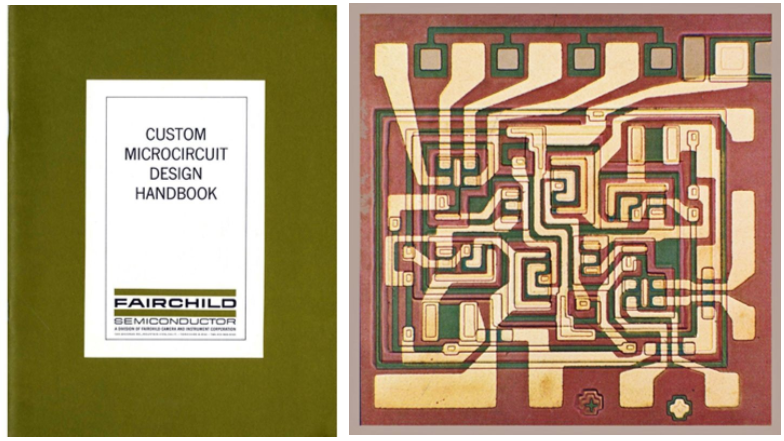
This is how the historically first resistor-transistor logic was born (RTL and its types DCTL, DCUTL and RCTL, opened in 1952), powerful and fast emitter-connected logic (ECL and its types PECL and LVPECL, first used in the IBM 7030 Stretch, took up a lot of space and was very hot, but because of the unsurpassed speed parameters, it was massively used and embodied in microcircuits, was the standard of supercomputers until the early 1980s from Cray-1 to "Electronics SS LSI"), diode-transistor logic for use in machines simpler (DTL and its varieties CTDL and HTL appeared in the IBM 1401 in 1959).
By the time the microcircuits appeared, it became clear that manufacturers need to choose in the same way - and what type of logic will be used inside their chips? And most importantly, what kind of chips will they be, what elements will they contain?
This is how logical families were born. When Texas Instruments released the first such family in the world - SN51x (1961, RCTL), they decided on the type of logic (resistor-transistor) and what functions would be available in their microcircuits, for example, the SN514 element implemented NOR / NAND.
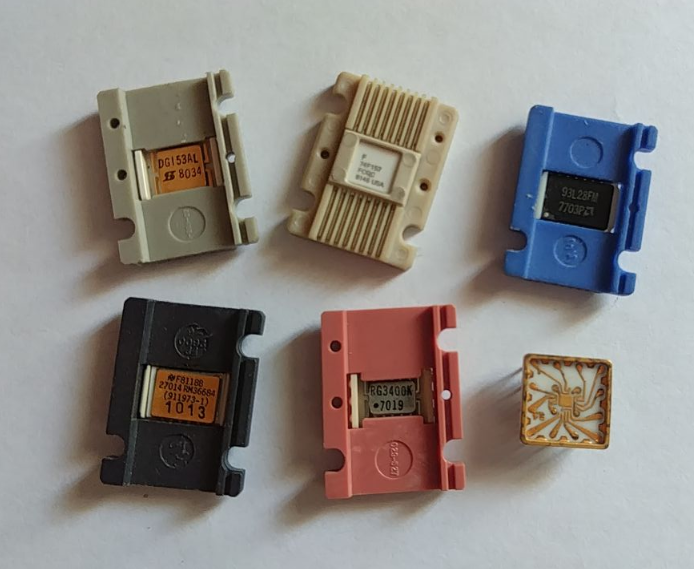
As a result, for the first time in the world, there was a clear division into companies producing logical families (with their own speed, price and various know-how) and companies that could buy them and assemble computers of their own architecture on them.
Naturally, there remained a few vertically integrated companies, such as Ferranti, Phillips and IBM, who preferred to stick to the idea of making a computer inside and out at their own facilities, but by the 1970s they either died out or abandoned this practice. IBM was the last to fall, they used an absolutely full development cycle - from silicon melting to the release of their own chips and machines on them until 1981, when the IBM 5150 (better known as Personal Computer, the ancestor of all PCs) came out - the first computer to bear their trademark and inside - a processor of someone else's design.
Initially, by the way, stubborn "people in blue suits" tried to create a 100% original home PC and even released it on the market - IBM 5110 and 5120 (on the original PALM processor, in fact, it was a micro version of their mainframes), but from - because of the prohibitive price and incompatibility with the already born class of small machines with Intel processors, both times they were in for an epic failure. Funnily enough, their mainframe division hasn't given up so far, and they are still developing their own processor architecture to this day. Moreover, they also produced them in the same way absolutely independently until 2014, when they finally sold their semiconductor companies to Global Foundries. So the last line of computers, produced in the style of the 1960s, disappeared - entirely by one company inside and out.
Returning to logical families, we note the last of them, which appeared already in the era of microcircuits especially for them. It is not as fast or as hot as transistor-transistor logic (TTL, invented in 1961 at TRW). TTL logic was the first IC standard and was used in all major chips in the 1960s.
Then came integral injection logic (IIL, appeared at the end of 1971 at IBM and Philips, was used in chips from the 1970s and 1980s) and the greatest of all - metal oxide semiconductor logic (MOS, developed from the 60s and to 80th in the CMOS version, which completely captured the market, now 99% of all modern chips are CMOS).
The first commercial computer on microcircuits was the RCA Spectra 70 series (1965), the Burroughs B2500 / 3500 small banking mainframe released in 1966, and Scientific Data Systems Sigma 7 (1966). RCA traditionally developed its own microcircuits (CML - Current Mode Logic), Burroughs took advantage of Fairchild's help in developing the original CTL (Complementary Transistor Logic) line of microcircuits, SDS ordered the chips from Signetics. These machines were followed by CDC, General Electric, Honeywell, IBM, NCR, Sperry UNIVAC - the era of transistor machines is gone.
Note that it was not only in the USSR that the creators of their glory were forgotten. A similar, rather unpleasant story happened with integrated circuits.
In fact, the world owes the emergence of modern IP to the well-coordinated work of professionals from Fairchild - first of all, the team of Ernie and Last, as well as to Dammer's idea and Legovets' patent. Kilby produced an unsuccessful prototype, which was impossible to modify, its production was abandoned almost immediately, and his microcircuit has only a collectible value for history, it did not give anything to technology. Bo Loek wrote about it this way:
Noyce rediscovered the idea of Legovets, but then pulled out of work, and all the discoveries, including wet oxidation, metallization and etching, were made by other people, and they also released the first real commercial monolithic IC.
As a result, the story remained unfair to these people until the end - back in the 60s, the fathers of microcircuits were called Kilby, Legovets, Noyce, Ernie and Last, in the 70s the list was reduced to Kilby, Legovets and Noyce, then to Kilby and Noyce, and the pinnacle of myth-making was the receipt of the 2000 Nobel Prize by Kilby alone for the invention of the microcircuit.
Note that 1961-1967 was the era of monstrous patent wars. Everybody fought everybody, Texas Instruments with Westinghouse, Sprague Electric Company and Fairchild, Fairchild with Raytheon and Hughes. In the end, the companies realized that none of them would collect all the key patents from themselves, and while the courts last - they are frozen and cannot serve as assets and bring money, so it all ended up with a global and cross-licensing of all obtained by that time. technologies.
Turning to the consideration of the USSR, one cannot fail to note other countries whose policies were sometimes extremely strange. In general, studying this topic, it becomes clear that it is much easier to describe not why the development of integrated circuits in the USSR failed, but why they succeeded in the United States, for one simple reason - they, except the United States, did not succeed anywhere.
Let us emphasize that the point was not at all in the intelligence of the developers - intelligent engineers, excellent physicists and brilliant computer visionaries were everywhere: from the Netherlands to Japan. The problem was one thing - management. Even in Britain, the Conservatives (not to mention the Laborites, who finished off the remains of industry and development there), corporations did not have the same power and independence as in America. Only there business representatives talked with the authorities on an equal footing: they could invest billions wherever they wanted with little or no control, converge in fierce patent battles, entice employees, found new companies literally at the snap of a finger (to the same "treacherous eight" that threw Shockley, traces back 3/4 of America's current semiconductor business - from Fairchild and Signetics to Intel and AMD).
All these companies were in continuous living movement: they searched, discovered, captured, ruined, invested - and survived and evolved, like living nature. Nowhere else in the world has there been such freedom of risk and enterprise. The difference will become especially obvious when we start talking about the domestic "Silicon Valley" - Zelenograd, where no less intelligent engineers, being under the yoke of the Ministry of Radio Industry, had to spend 90% of their talent on copying several years old American developments, and those who stubbornly went forward - Yuditsky, Kartsev, Osokin - very quickly tamed and driven back onto the rails laid by the party.
Generalissimo Stalin himself spoke well about this in an interview with the Ambassador of Argentina Leopoldo Bravo on February 7, 1953 (from the book of Stalin I. V. Works. - T. 18. - Tver: Information and Publishing Center "Union", 2006):
As a result, the party thought with us, but the engineers did it. Hence the result.
Japan
A practically similar situation happened in Japan, where the traditions of state control were, of course, many times softer than the Soviet ones, but quite at the level of Britain (and we have already discussed what happened to the British school of microelectronics).
In Japan, by 1960, there were four major players in the computer business, with three being 100 percent government-owned. Most powerful - the Department of Trade and Industry (MITI) and its technical arm, the Electrical Engineering Laboratory (ETL); Nippon Telephone & Telegraph (NTT) and its chip labs; and the least significant participant, from a purely financial point of view, the Ministry of Education, which controlled all developments within the prestigious national universities (especially in Tokyo, an analogue of Moscow State University and MIT in terms of prestige in those years). Finally, the last player was the combined corporate laboratories of the largest industrial firms.
Japan was also so similar to the USSR and Britain in that all three countries suffered significantly during the Second World War, and their technical potential was reduced. And Japan, in addition, was in the occupation until 1952 and under close financial control of the United States until 1973, the yen exchange rate until that moment was rigidly pegged to the dollar by intergovernmental agreements, and the international Japanese market has become generally since 1975 (and yes, we are not talking about that that they themselves deserve it, we are just describing the situation).
As a result, the Japanese were able to create several first-class machines for the domestic market, but in the same way, the production of microcircuits yawned, and when their golden age began after 1975, a real technical renaissance (the era around 1990, when Japanese technology and computers were considered the best in the world and the subject envy and dreams), the production of these very miracles was reduced to the same copying of American developments. Although, we must give them their due, they not only copied, but disassembled, studied and improved any product in detail to the last screw, as a result, their computers were smaller, faster and more technologically advanced than American prototypes. For example, the first computer on ICs of their own production Hitachi HITAC 8210 came out in 1965, simultaneously with RCA. Unfortunately for the Japanese, they were part of the world economy, where such tricks do not pass with impunity, and as a result of the patent and trade wars with the United States in the 80s, their economy collapsed into stagnation, where it remains practically to this day (and if you recall them epic failure with the so-called "5th generation machines" ...).
At the same time, both Fairchild and TI tried to establish production facilities in Japan in the early 60s, but ran into stiff resistance from MITI. In 1962, MITI banned Fairchild from investing in a factory it had already bought in Japan, and the inexperienced Noyce tried to enter the Japanese market through the NEC corporation. In 1963, the NEC leadership, allegedly acting under pressure from the Japanese government, obtained from Fairchild extremely favorable licensing conditions, which subsequently closed Fairchild's ability to independently trade in the Japanese market. It was only after the deal was concluded that Noyce learned that the NEC president concurrently chaired the MITI committee that was blocking the Fairchild deals. TI attempted to establish a production facility in Japan in 1963 after having had negative experience with NEC and Sony. For two years, MITI refused to give a definite answer to TI's application (while stealing their chips with might and main and releasing them without a license), and in 1965 the United States struck back, threatening the Japanese with an embargo on the import of electronic equipment that violated TI patents, and for started by banning Sony and Sharp.
MITI realized the threat and began to think how they could trick the white barbarians. In the end, they built a multi-port, pushed to break an already pending deal between TI and Mitsubishi (owner of Sharp) and convinced Akio Morita (Sony founder) to strike a deal with TI "in the interests of the future of Japanese industry." At first, the agreement was extremely disadvantageous for TI, and for nearly twenty years Japanese companies have been producing cloned chips without paying royalties. The Japanese already thought how wonderfully they deceived the gaijins with their tough protectionism, and then the Americans pressed them a second time already in 1989. As a result, the Japanese were forced to admit that they had violated patents for 20 years and pay the United States monstrous royalties of half a billion dollars a year, which finally buried Japanese microelectronics.
As a result, the dirty game of the Ministry of Commerce and their total control over large companies with decrees of what and how to produce, left the Japanese sideways, and such that they were literally kicked out of the world galaxy of computer manufacturers (in fact, by the 80s, only they were competing with the Americans ).
the USSR
Finally, let's move on to the most interesting thing - the Soviet Union.
Let's say right away that a lot of interesting things were going on there before 1962, but now we will consider only one aspect - real monolithic (and, moreover, original!) Integrated circuits.
Yuri Valentinovich Osokin was born in 1937 (for a change, his parents were not enemies of the people) and in 1955 he entered the electromechanical faculty of the Moscow Power Engineering Institute, in the recently opened specialty "dielectrics and semiconductors", which he graduated in 1961. He made a diploma in transistors in our main semiconductor center near Krasilov in NII-35, from where he went to the Riga Semiconductor Device Plant (RZPP) to produce transistors, and the plant itself was as young as the graduate Osokin - it was created only in 1960.
Osokin's appointment there was a normal practice for a new plant - RZPP trainees often studied at NII-35 and trained at Svetlana. Note that the plant not only possessed qualified Baltic personnel, but was also located on the periphery, far from Shokin, Zelenograd and all the showdowns associated with them (we will talk about this later). By 1961, RZPP had already mastered the production of most of the NII-35 transistors.
In the same year, the plant, on its own initiative, began to dig in the field of planar technologies and photolithography. In this he was assisted by NIRE and KB-1 (later "Almaz"). RZPP developed the first in the USSR automatic line for the production of planar transistors "Ausma", and its general designer A.S. Gotman dawned on a bright thought - since we are still stamping transistors on a chip, why not immediately assemble them from these transistors?
In addition, Gotman proposed a revolutionary, by the standards of 1961, technology - to separate the transistor leads not to standard legs, but to solder them to a contact pad with solder balls on it, to simplify further automatic installation. In fact, he opened a real BGA package, which is now used in 90% of electronics - from laptops to smartphones. Unfortunately, this idea did not go into the series, as there were problems with the technological implementation. In the spring of 1962, the chief engineer of NIRE V.I.Smirnov asked the director of the RZPP S.A. Bergman to find another way to implement a multi-element circuit of the 2NE-OR type, universal for building digital devices.
The director of the RZPP entrusted this task to the young engineer Yuri Valentinovich Osokin. A department was organized as part of a technological laboratory, a laboratory for the development and manufacture of photomasks, a measuring laboratory and a pilot production line. At that time, a technology for manufacturing germanium diodes and transistors was supplied to RZPP, and it was taken as the basis for a new development. And already in the fall of 1962, the first prototypes of the germanium, as they said at the time, solid P12-2 scheme were obtained.
Osokin faced a fundamentally new task: to implement two transistors and two resistors on one crystal, in the USSR no one did anything like that, and there was no information about the work of Kilby and Noyce in the RZPP. But Osokin's group brilliantly solved the problem, and in a completely different way from how the Americans did it, working not with silicon, but with germanium mesatransistors! Unlike Texas Instruments, the residents of Riga immediately created both a real microcircuit and a successful technical process for it from three consecutive exposures, in fact, they did it simultaneously with Noyce's group, in an absolutely original way and received a product no less valuable from a commercial point of view.
How significant was the contribution of Osokin himself, was he an analogue of Noyce (all the technical work for which the group of Last and Ernie performed) or a completely original inventor?
This is a mystery covered in darkness, like everything connected with Soviet electronics. For example, V. M. Lyakhovich, who worked at that very NII-131, recalls (hereinafter, quotes from E. M. Lyakhovich's unique book "I am from the time of the first"):
The idea was embodied in hardware with the help of OV Vedeneev, who was working at Svetlana at that time:
Removal through the checkpoint is not mentioned here by chance. All work on "hard schemes" at the initial stage was a pure gamble and could easily be closed, the developers had to use not only technical, but also organizational skills typical of the USSR.
June 1960 of the year.
... In the laboratory, we made demonstration assemblies of typical units on these solid diagrams, placed on plexiglass panels.
... The chief engineer of NII-131, Veniamin Ivanovich Smirnov, was invited to the demonstration of the first solid circuits and told him that this element is universal ... The demonstration of solid circuits made an impression. Our work was approved.
... In October 1960, with these handicrafts, the chief engineer of the NII-131, the inventor of the solid circuit, engineer L.I. Reimerov, and I, the head of the laboratory, went to Moscow and showed our products to the chairman of the State Committee for Electric Power Engineering V. D. Kalmykov and his deputy A. I. Shokin.
...IN. D. Kalmykov and A. I. Shokin positively assessed the work done by us. They noted the importance of this area of work and suggested contacting them for help if necessary.
... Immediately after the report to the minister and the minister's support of the work we are doing on the creation and development of a germanium solid circuit, V.I.Smirnov ordered the creation of a laboratory of solid circuit physics with an experimental production site ... All the main work on the creation of a solid circuit section was carried out in during 1960. In the first quarter of 1961, our first solid circuits were manufactured at the site, although with the help of friends at the Svetlana plant (soldering gold leads, multicomponent alloys for the base and emitter).
At the first stage of work, multicomponent alloys for the base and emitter were obtained at the Svetlana plant, the gold leads were also taken to Svetlana to solder, since the institute did not have its own installer and 50 micron gold wire. It turned out to be questionable whether even experimental samples of on-board computers, developed at the research institute, were equipped with microcircuits, and mass production was out of the question. It was necessary to look for a serial plant.
... From that moment, our invasion began "on the serial plant with the transfer of" documentation "drawn in chalk on a blackboard and presented orally by technology. The electrical parameters and measurement techniques were presented on one A4 page, but the task of sorting and controlling the parameters was ours.
... Our enterprises turned out to have the same mailbox numbers of PO Box 233 (RPZ) and PO Box 233 (NII-131). Hence the name of our "Reimerov's element" - TS-233 was born.
Manufacturing details are striking:
In general, in terms of manufacturability, the description of this scheme is not far from Kilby ...
Where is Osokin's place here?
We study the memoirs further.
... Yura made such a volume resistor in R12-2 TS and considered that the work was over, since the temperature problem had been solved. Soon Yuri Valentinovich brought me about 100 solid circuits in the form of a "guitar" with a volume resistor in the collector, which was obtained by special etching of the collector layer of p-type germanium.
... He showed that these vehicles work up to +70 degrees, what is the percentage of the yield of suitable ones and what is the range of parameters. At the institute (Leningrad) we assembled the Kvant modules on these solid diagrams. All tests in the operating temperature range were successful.
But it was not so easy to launch the second, seemingly more promising, option into production.
Samples of circuits and a description of the technological process were transferred to the RZPP, but there, by that time, the serial production of the P12-2 with a volume resistor had already begun. The emergence of improved schemes would mean stopping the production of old ones, which could disrupt the plan. In addition, in all likelihood, Yu.V. Osokin had personal reasons to keep the release of the P12-2 of the old version. The situation was superimposed on the problems of interdepartmental coordination, because NIRE belonged to the SCRE, and the RZPP to SCET. The committees had different regulatory requirements for products, and the enterprise of one committee had practically no leverage over the plant from another. In the final, the parties came to a compromise - the P12-2 release was retained, and the new high-speed circuits received the P12-5 index.
As a result, we see that Lev Reimerov was an analogue of Kilby for Soviet microcircuits, and Yuri Osokin was an analogue of Jay Last (although he is usually ranked among the full-fledged fathers of Soviet integrated circuits).
As a result, it is even more difficult to understand the intricacies of design, factory and ministerial intrigues of the Union than in the corporate wars of America, however, the conclusion is quite simple and optimistic. Reimer came up with the idea of integration almost simultaneously with Kilby, and only the Soviet bureaucracy and the peculiarities of the work of our research institutes and design bureaus with a bunch of ministerial approvals and squabbles delayed domestic microcircuits for a couple of years. At the same time, the first schemes were almost the same as the "hair" Type 502, and they were improved by the lithographer Osokin, who played the role of the domestic Jay Last, also completely independently of Fairchild's developments and at about the same time, preparing the release of quite modern and competitive for that period of the present IP.
If the Nobel Prizes were given out a little more fairly, then Jean Ernie, Kurt Legovets, Jay Last, Lev Reimerov and Yuri Osokin should have shared the honor of creating the microcircuit. Alas, in the West, no one even heard of Soviet inventors before the collapse of the Union.
In general, American myth-making, as already mentioned, in some aspects was similar to the Soviet one (as well as the urge to appoint official heroes and the simplification of a complex story). After the release of the famous book by Thomas Reid "The Chip: How Two Americans Invented the Microchip and Launched a Revolution" in 1984, the version of "two American inventors" became canon, they even forgot about their own colleagues, not to mention to suggest that someone other than Americans might suddenly have invented something somewhere!
However, in Russia they are also distinguished by a short memory, for example, in a huge and detailed article on the Russian Wikipedia about the invention of microcircuits - there is not a word about Osokin and his developments (which, by the way, is not surprising, the article is a simple translation of a similar English-language one, in which this information and there was no trace).
At the same time, what is even more sad, the father of the idea itself, Lev Reimerov, is forgotten even more deeply, and even in those sources where the creation of the first real Soviet ISs is mentioned, only Osokin is noted as their sole creator, which is certainly sad.
It's amazing that in this story, the Americans and I showed ourselves exactly the same - neither side practically remembered their real heroes, instead creating a series of enduring myths. It is very sad that the creation of "Quantum", in general, became possible to restore only from a single source - the very book "I am from the time of the first", published by the publishing house "Scythia-print" in St. Petersburg in 2019 with a circulation of 80 (! ) instances. Naturally, for a wide range of readers, it was absolutely inaccessible for a long time (not knowing at least something about Reimerov and this story from the beginning - it was even difficult to guess what exactly needs to be looked for on the net, but now it is available in electronic form here here).
All the more, I would like these wonderful people not to be ingloriously forgotten, and we hope that this article will serve as another source in the restoration of priorities and historical justice in the difficult issue of creating the world's first integrated circuits.
Structurally, the P12-2 (and the subsequent P12-5) were made in the form of a classic tablet made of a round metal cup with a diameter of 3 mm and a height of 0,8 mm - Fairchild only came up with such a packaging a year later. By the end of 1962, the pilot production of RZPP produced about 5 thousand R12-2, and in 1963 several tens of thousands of them were made (unfortunately, by this time the Americans had already realized what their strength was, and had produced more than half a million of them).
What is funny - in the USSR, consumers did not know how to work with such a package, and specifically to make their life easier, in 1963, in the NIRE within the framework of the Kvant ROC (A. N. Pelipenko, E. M. Lyakhovich), a module design was developed in which four P12-2 vehicles - this is how perhaps the world's first GIS of two-level integration was born (TI used its first serial microcircuits in 1962 in a similar design called the Litton AN / ASA27 logic module - they were used to assemble on-board radar computers).
Amazingly, not only the Nobel Prize - but even special honors from his government, Osokin did not receive (and Reimer did not even receive this - they completely forgot about him!), He did not receive anything at all for microcircuits, only later in 1966 he was awarded a medal " For labor distinction ", so to speak," on a general basis, "just for success in work. Further - he grew up to the chief engineer and automatically began to receive status awards, which were hung up by almost everyone holding at least some responsible posts, a classic example is the "Badge of Honor", which he was given in 1970, and in honor of the transformation of the plant into In 1975 he received the Order of the Red Banner of Labor at the Riga Research Institute of Microdevices (RNIIMP, the head enterprise of the newly created PA "Alpha").
Osokin's department was given a State Prize (just the Latvian SSR, not Lenin's, which were generously distributed to Muscovites), and then not for microcircuits, but for the improvement of microwave transistors. In the USSR, patenting inventions to authors did not give anything but trouble, an insignificant one-time payment and moral satisfaction, so many inventions were not formalized at all. Osokin was also in no hurry, but for enterprises the number of inventions was one of the indicators, so they still had to be formalized. Therefore, the USSR AS No. 36845 for the invention of the TC P12-2 was received by Osokin and Mikhalovich only in 1966.
In 1964 "Quantum" was used in the first in the USSR avionics on-board computer of the third generation "Gnome" (also, possibly, the world's first serial computer on microcircuits). In 1968, a series of first ISs was renamed 1LB021 (GIS received indexes such as 1HL161 and 1TP1162), then 102LB1V. In 1964, by order of NIRE, the development of R12-5 (series 103) and modules based on it (series 117) was completed. Unfortunately, Р12-5 turned out to be difficult to manufacture, mainly due to the difficulty of zinc alloying, the crystal turned out to be laborious to manufacture: the yield percentage was low, and the cost was high. For these reasons, TC P12-5 was produced in small volumes, but by this time, work was already underway on a wide front to develop planar silicon technology. The volume of production of germanium ICs in the USSR is not exactly known, according to Osokin, since the mid-60s they have been produced at several hundred thousand per year (the United States, alas, has already produced millions).
Next comes the most comical part of the story.
If you ask to guess the end date of the release of the microcircuit invented in 1963, then, in the case of the USSR, even real fanatics of old technologies will surrender. Without significant changes, IS and GIS series 102-117 were produced until the mid-1990s, for more than 32 years! The volume of their release, however, was negligible - in 1985 about 6 units were produced, in the USA it is three orders of magnitude (!) More.
Realizing the absurdity of the situation, Osokin himself in 1989 turned to the leadership of the Military-Industrial Commission under the Council of Ministers of the USSR with a request to remove these microcircuits from production due to their obsolescence and high labor intensity, but received a categorical refusal. Deputy Chairman of the military-industrial complex VL Koblov told him that the planes fly reliably, which means there is nothing to do with nonsense, replacement is out of the question. The "Gnome" computers are still in the navigator's cockpit of the Il-76 (and the aircraft itself was produced in 1971) and some other domestic aircraft.
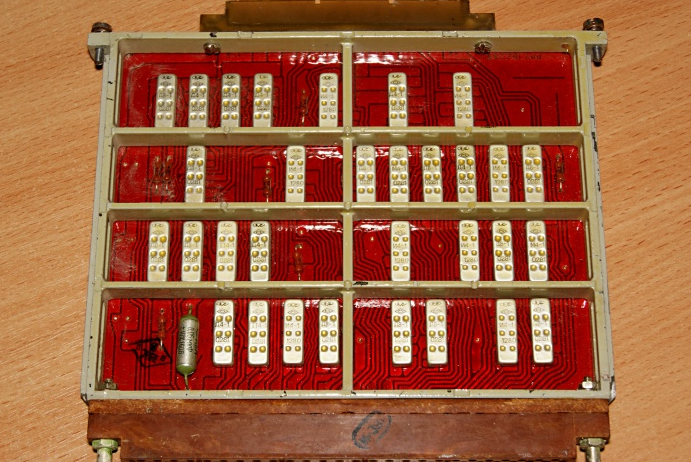
What is especially offensive - the predatory sharks of capitalism enthusiastically peeped at each other's technological solutions.
The Soviet State Planning Committee was relentless - where it was born, it came in handy there! As a result, the Osokin microcircuits occupied a narrow niche of the on-board computers of several aircraft and, as such, were used for the next thirty years! Neither the BESM series, nor all kinds of "Minsky" and "Nairi" - they were not used anywhere else.
Moreover, even in on-board computers they were not installed everywhere, the MiG-25, for example, flew on an analog electromechanical computer, although its development ended in 1964. Who prevented the installation of microcircuits there? Conversations that lamps are more resistant to a nuclear explosion?
But the Americans used microcircuits not only in Gemini and Apollo (and their military special versions perfectly endured the passage through the Earth's radiation belts and work in the orbit of the Moon). They used the chips as soon (!) As they became available, in full-fledged military equipment. For example, the famous Grumman F-14 Tomcat became the first aircraft in the world, which in 1970 received an on-board computer based on an LSI (it is often called the first microprocessor, but formally this is incorrect - the F-14 onboard computer consisted of several microcircuits of medium and large integration, so no less - these were real complete modules, such as ALU, and not a set of discrete looseness on any 2I-NOT).
It is surprising that Shokin, fully approving the technology of the people of Riga, did not give it the slightest acceleration (well, except for official approval and the order to start serial production at the RZPP), and nowhere was the popularization of this topic, the involvement of specialists from other research institutes and, in general , all kinds of development with the goal of getting a precious standard for our own microcircuits as soon as possible, which could be independently developed and improved.
Why did it happen?
Shokin was not up to the Osokin experiments, at that time he was solving the issue of cloning American developments in his native Zelenograd, we will talk about this in the next article.
As a result, apart from R12-5, RZPP did not deal with microcircuits anymore, did not develop this topic, and other factories did not turn to his experience, which was very regrettable.
Another problem was that, as we have already said, in the West, all microcircuits were produced by logical families that could satisfy any need. We limited ourselves to one single module, the series was born only within the framework of the "Quant" project in 1970 and then limited: 1ХЛ161, 1ХЛ162 and 1ХЛ163 - multifunctional digital circuits; 1LE161 and 1LE162 - two and four logical elements 2NE-OR; 1TP161 and 1TP1162 - one and two triggers; 1UP161 is a power amplifier, as well as 1LP161 is a unique "inhibit" logic element.
What was going on in Moscow at that time?
Just as Leningrad became the center of semiconductors in the 1930s – 1940s, Moscow became the center of integral technologies in the 1950–1960s, because the famous Zelenograd was located there. We will talk about how it was founded and what happened there next time.
- Alexey Eremenko
- https://www.youtube.com/ https://www.computerhistory.org/ https://www.computer-museum.ru, http://www.155la3.ru

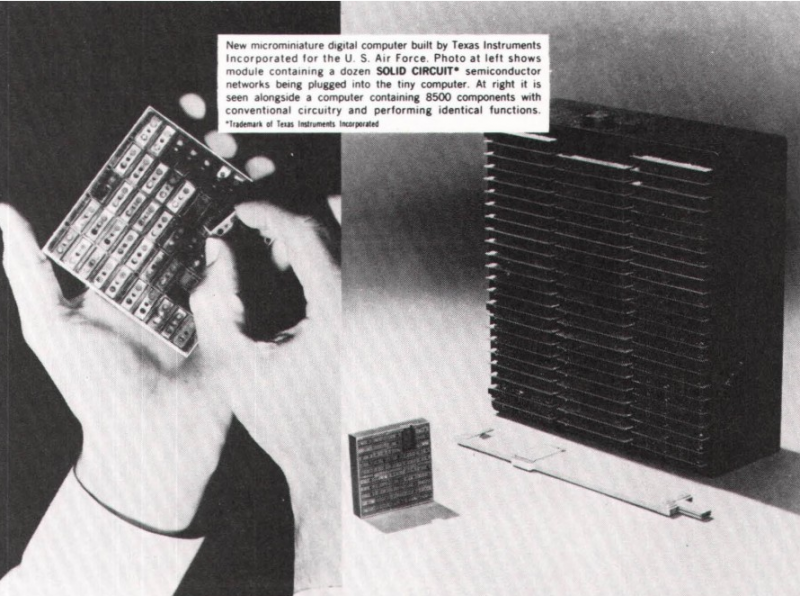
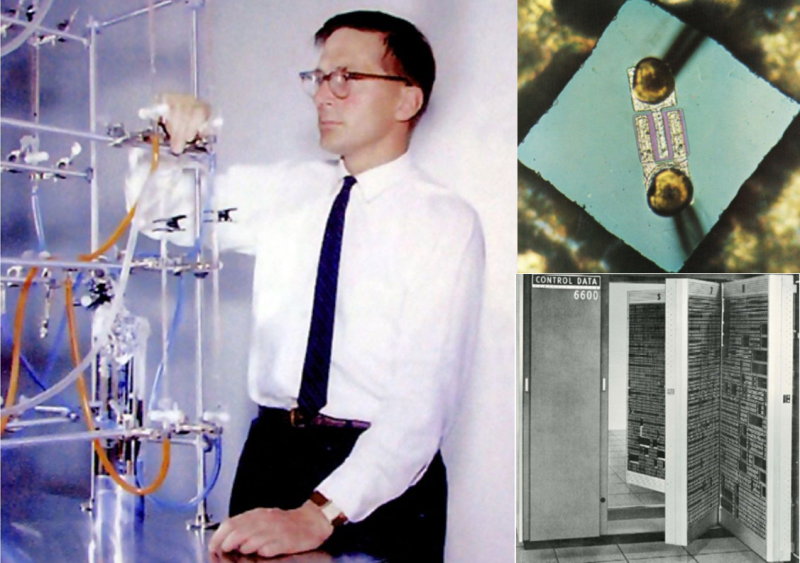
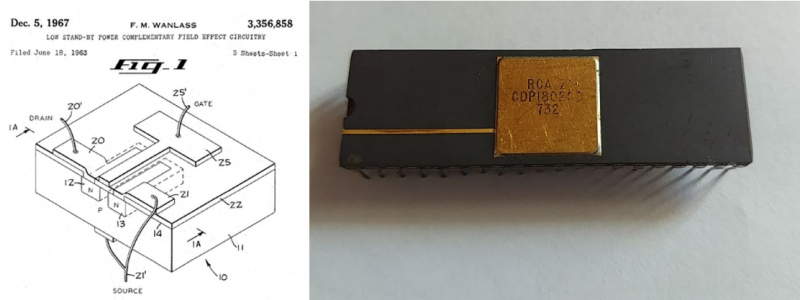
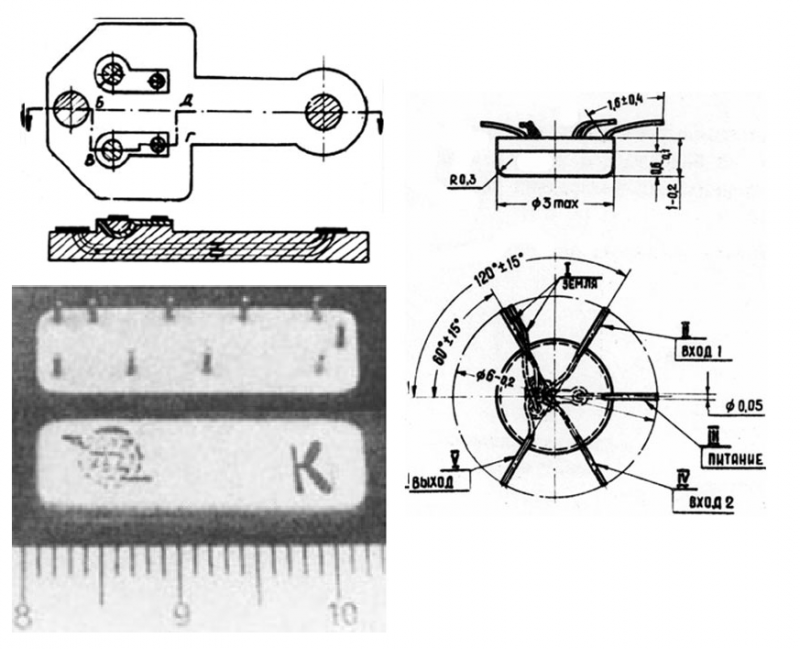

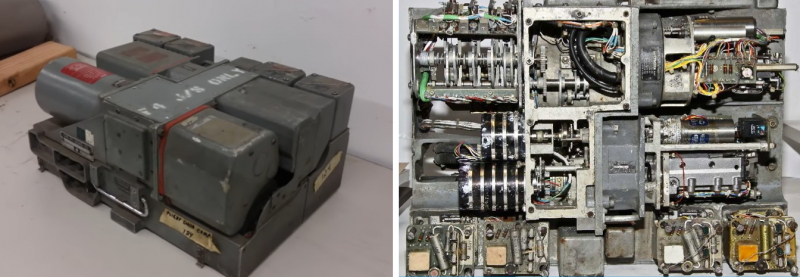
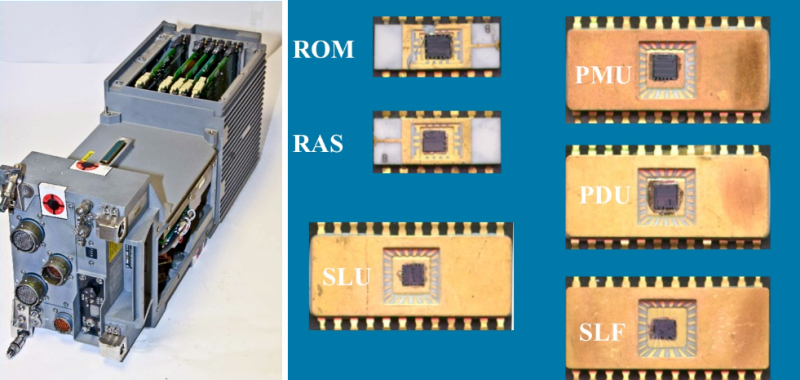
Information